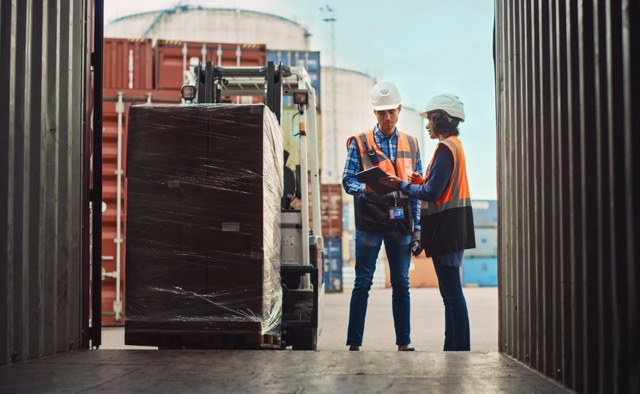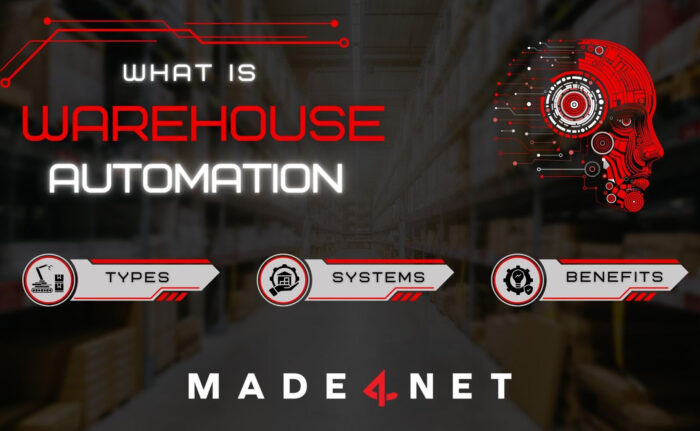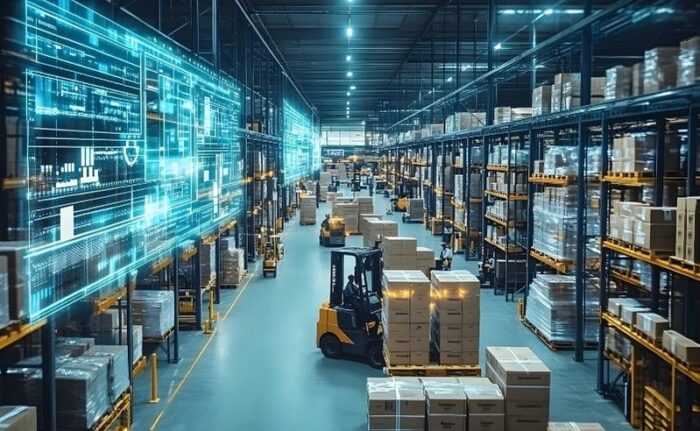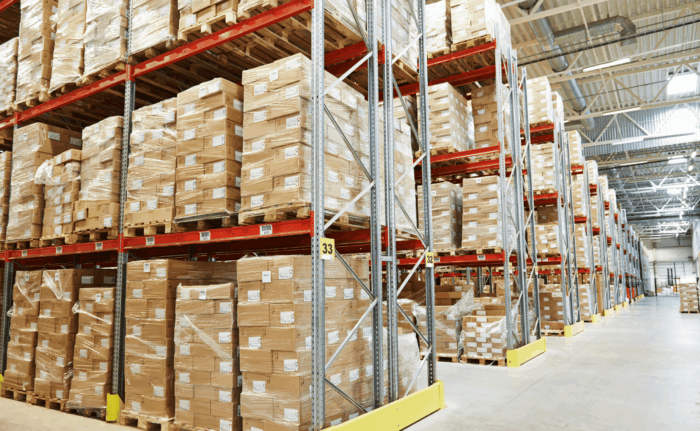
Gartner Research shows that customers are 21% more likely to repurchase when they’re satisfied with the last mile alone. That makes last-mile delivery software more than just a nice-to-have — it’s becoming a core requirement in modern logistics. As customer expectations climb and delivery networks grow more complex, using a Warehouse Management System (WMS) to manage and optimize last-mile operations has shifted from a convenience to a competitive necessity.
Last-Mile Is More Important Than You Might Think
In this article, we’ll cover:
- What is last-mile delivery management?
- What are the key aspects of last-mile delivery management?
- What are common challenges when it comes to last-mile delivery management?
- What is last-mile delivery optimization?
- What are best practices for last-mile delivery optimization?
- Why should operators use a wms for last-mile delivery management and optimization?
- Frequently Asked Questions about Last-Mile Delivery Management
What is Last-Mile Delivery Management?
Last-mile delivery management is the coordination and execution of the final stage of the logistics process—getting products from distribution centers or warehouses to the customer’s doorstep. This phase is the most delicate and costly part of the supply chain, often consuming a disproportionately high share of logistics budgets. In fact, Statista reports that last-mile delivery accounted for 53% of total shipping costs in 2023.
Because of its complexity, last-mile delivery is also where customer satisfaction is won or lost. Last-mile delivery software gives businesses the tools to improve visibility, streamline operations, and ensure accurate, on-time deliveries for their customers.
What are the Key Aspects of Last-Mile Delivery Management?
Effective last-mile delivery requires more than simply moving freight. Success depends on balancing customer convenience with operational efficiency. Core aspects include:
- Route Planning and Dynamic Routing: Building the most efficient routes while dynamically adjusting for traffic, weather, capacity, and disruptions.
- Real-Time Tracking and Communication: Keeping operations and customers informed with live updates, ETAs, and mobile notifications.
- Flexible Delivery Options: Offering lockers, pick-up points, or contactless delivery to minimize failed attempts and boost convenience.
- Load Optimization & Scheduling: Sequencing loads and batching deliveries to reduce mileage and labor costs.
The right combination of last-mile delivery features allows companies to develop advanced delivery networks that enhance the customer experience on a larger scale.
What are the Common Challenges When It Comes to Last-Mile Delivery Management?
Managing the final mile presents unique challenges that add complexity and cost:
- High Operational Costs: Fuel, labor, and fleet maintenance drive costs up, while failed deliveries amplify the impact.
- Traffic and Urban Congestion: Dense city environments cause delays and routing challenges for drivers.
- Customer Expectations: Consumers demand visibility, accurate ETAs, and delivery flexibility.
- Scalability Pressures: Meeting peak-season demand or business expansion strains routing and resources.
- Sustainability Concerns: Inefficient packaging, long routes, and higher emissions impact both margins and environmental goals
As customer dependency on e-commerce continues to grow, so does the importance of last-mile delivery. Businesses that invest in reliable, last-mile solutions to streamline their operations will find themselves one step ahead of their competition.
What is Last-Mile Delivery Optimization?
Last-mile delivery optimization goes beyond execution—it blends smart tools, data, and workflows to maximize efficiency while meeting customer needs.
This includes strategies like real-time rerouting to avoid gridlock, AI-powered delivery window options for customers, and properly sequencing truck loads so every package reaches its destination with fewer costs and fewer delays.
What are Best Practices For Last-Mile Delivery Optimization?
To transform last-mile operations from a cost center into a competitive advantage, companies can adopt proven practices such as:
- AI-Powered Route Planning: Using predictive insights to reroute dynamically and cut travel time.
- Live Tracking and Exception Management: Giving managers the visibility to intervene before issues escalate.
- Contactless Delivery Options: Enabling flexible customer choices and reducing failed attempts.
- Local Partnerships and Consolidation: Leveraging local carriers, hubs, or consolidation points to shorten routes.
- Driver Empowerment: Providing mobile tools, digital workflows, and performance feedback to strengthen retention and productivity.
- Customer Experience Strategies: Personalization, proactive communication, and post-delivery feedback loops play a big role in last-mile delivery optimization and management, reinforcing long-term loyalty and efficiency.
- Integration: When last-mile delivery management solutions are connected with Transportation Management Systems (TMS) or ERP platforms, operators unlock a level of accuracy, speed, and cost control that siloed systems simply can’t deliver.
These innovations all work together to reduce travel distances and times, improve the customer experience, and foster improved productivity throughout the operation.
Why Should Operators Use a WMS For Last-Mile Delivery Management and Optimization?
Although many focus on route-planning systems alone, a WMS delivers critical efficiency gains by connecting the warehouse to the last mile for end-to-end visibility and control. A robust WMS can:
- Optimize Loading and Sequencing: Trucks are loaded in reverse stop order, reducing unloading time and road mileage.
- Provide Electronic Proof of Delivery (POD): Instant digital confirmation flows back to the WMS, tightening visibility and accuracy.
- Enable End-to-End Visibility: GPS integration ensures customers and operators see the package journey from dock to doorstep.
- Streamline Reverse Logistics: Returns are processed quickly, updating inventory immediately.
- Support Exception Handling and Analytics: Missed deliveries or delays are flagged early, allowing proactive fixes and ongoing improvements.
With the ability to optimize last-mile scheduling, track deliveries, and ensure timely verification, companies using a WMS for last-mile delivery can meet growing customer expectations while controlling costs and improving efficiency.
Trends in Last-Mile Delivery
As last-mile delivery grows more complex and more critical to customer satisfaction, Gartner highlights seven key trends shaping the future — spanning proximity, customer experience, and innovation.
- Fine-tuned delivery with reliability and speed
Customers expect both speed and reliability. Gartner reports that 90% of those surveyed say speed is among the top three priorities for last-mile delivery, while 85% rank reliability similarly — many naming it their #1 concern. - Microfulfillment to supercharge last-mile delivery
Micro-fulfillment centers (MFCs) are expected to grow significantly by 2030 — around 12× their 2022 size. These centers help deliver goods faster by placing inventory close to where customers are. - Customer centricity
Nearly 70% of respondents in Gartner’s survey say that measuring customer satisfaction will be one of the most valuable metrics in strategic decision-making over the next few years. Delivery options, communication, and speed are all being shaped by the customer’s perspective. - Ultraconvenient delivery
Beyond just speed, consumers want delivery that fits their lives — more choices, more flexibility, more convenience. Because home delivery is typically less efficient, ultraconvenient options (e.g. alternative drop-off, same-day, narrow windows) are becoming more important. Gartner notes that last-mile logistics account for 41% of delivery costs, which gives incentive to optimize or offer non-traditional delivery modes. - Sustainability and electrification of fleets
With rising concern over climate impact and cost, companies are investing in electric vehicles (EVs) and alternative fuel fleets. Gartner references studies showing EV adoption can reduce delivery costs by about 25% and cut CO₂ emissions and energy use by around 30%. - Proliferation of unmanned vehicles
Drone delivery and other unmanned vehicle technologies are increasingly being explored and scaled. Advances in supply chain AI and machine learning are driving automation in how deliveries are executed, especially for low-touch, low-volume, or specialized use cases. - AI and GenAI in last-mile delivery
Artificial intelligence — including generative AI — is being used to optimize the last-mile: routing, forecasting, communications, and even decision support. Gartner notes that 42% of logistics organizations have prioritized automation technologies among their top investments to improve last-mile operations.
Conclusion
Optimizing last-mile delivery is a competitive advantage. The final delivery step is where customer loyalty is reinforced, costs can spiral without oversight, and sustainability goals are put to the test. With an eye on emerging trends and the right technology, last-mile delivery optimization becomes achievable. The right WMS can give you real-time visibility, faster execution, and better cost control — all while delighting customers with reliable delivery experiences.
Want to explore how your WMS can take last-mile delivery performance to the next level? Connect with us.
Sources:
Gartner Last-Mile Delivery Report, 3 Logistics Transformations Needed for Better Last-Mile Delivery
Gartner Article, Leverage Last-Mile Delivery Technology for Supply Chain Efficiency, By Oscar Sanchez Duran, December 4, 2024


